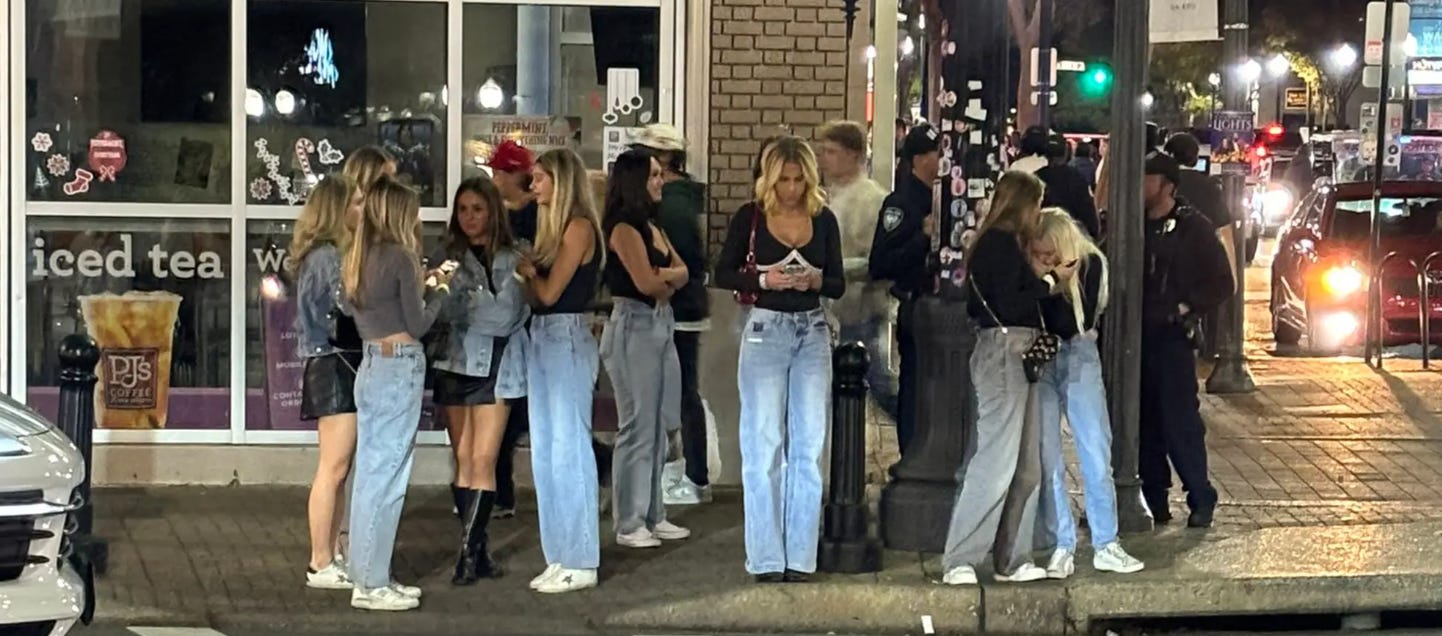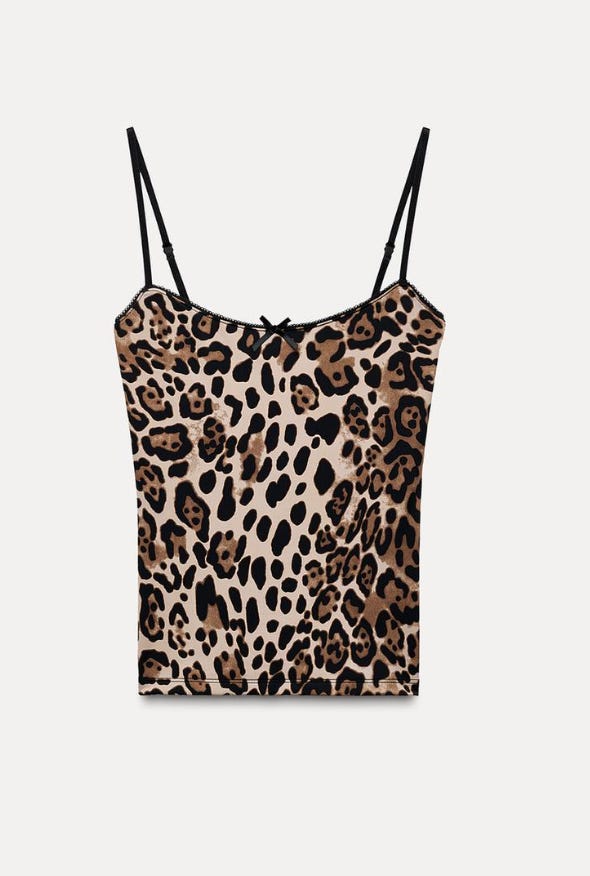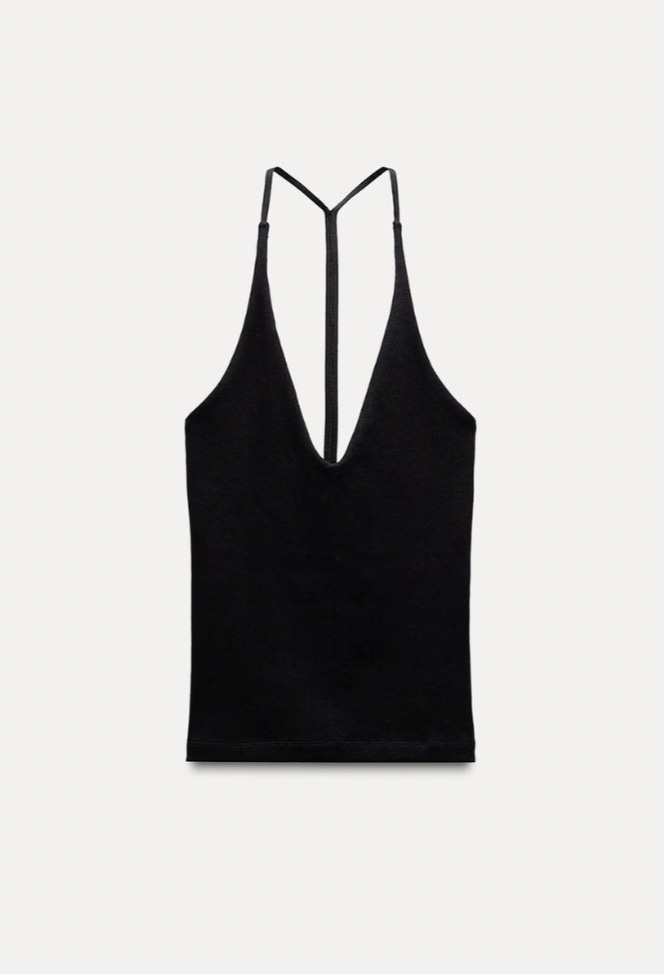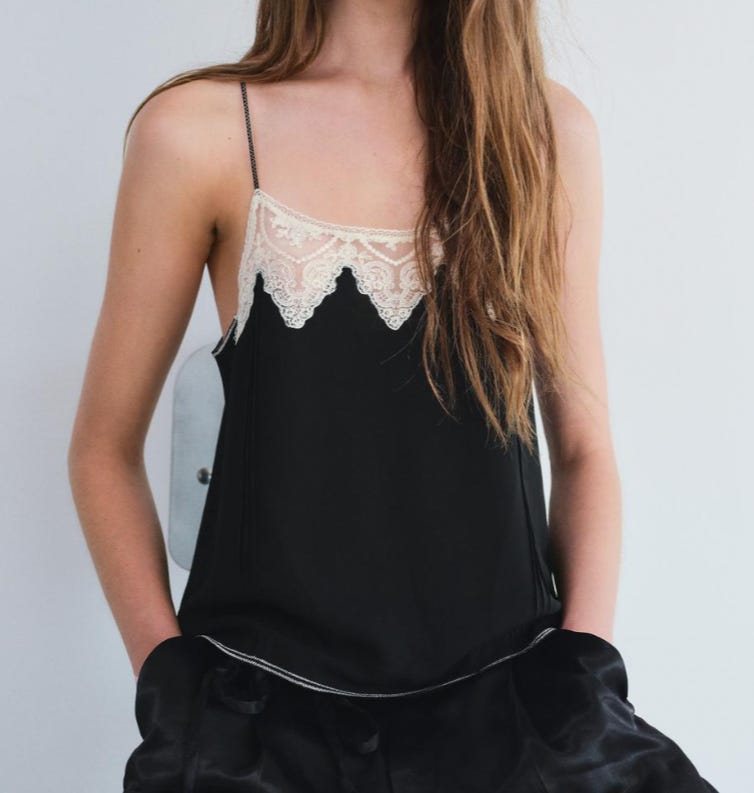There is a pile of clothes on the orange-brown carpeted floor. Shiny, black, sequined, strappy, be-jeweled, be-shimmered; all manner of fuss adorns them. There is a woman, stood in front of the pile, driven to mania. Her hair is astray, her skin is creased; she is panting, slightly red in the face, as if exhausted from exercise. Her plaintive cry echoes, lonely in the vales of her own mind: I don’t have anything to wear. I DON’T have ANYTHING to wear. I’m going to ATIK in 30 minutes, and I DON’T HAVE ANYTHING TO WEAR.
Anyone who has ever had the jointly torturous experience of being a woman and having to go to a club more than once has, probably, experienced the above panic: that of not having any cute clothes to go clubbing in. No strappy, cut out dress; no appropriately cleavage-revealing-but-nipple-preserving crop top; not the same jeans again, even if they’re the only ones high enough to sufficiently contain and tuck away my body. Upon hearing my distress, a well-meaning, unnamed individual suggested: “Why don’t you just go in what you have on?” The fit in question was a light sweater, and black cargos. “It looks perfectly nice,” continued the innocuous anonymous commenter, “and it’s probably sensible for how cold it is outside.” Oh, naïve friend, sweet blossom, how have you gone this long without comprehending the bone-breaking horror of social trespass that being a woman and wearing a sweater to a club constitutes? I might as well shoot myself dead.
And then I caught myself thinking: is it unfeminist to want to look conventionally ‘hot’ for the club? To want to wear tiny tops and figure-enhancing dresses? Am I implicitly sexualizing myself for the male gaze? What is it about the grammar of the club that dictates that women present bedecked versions of themselves, sensual and attractive, while men throw on the nearest jumper or t-shirt over their daily jeans (I pray for maybe that one necklace and bracelet) and show up? Is this not just an extension of the higher pressure on women to be presentable in day to day life? The costs of outfits, of make-up and jewellery constitute an invisible tax on the lives of women in all spaces. How are clubs any different?
Clubs license a more ‘blatant’ degree of sexualization; the club has objective, explicit sexual inferences in today’s age; it is perceived as a site of ‘get-withs’ in a way that normal, day to day interactions, or even interactions at a pub/bar/dinner party are not. What about the norms of a club make it socially permissible to start making out, maybe even go home with, a complete stranger who has been making eye contact with you all night, and why is that same behaviour socially impermissible in the street, the restaurant, or even the pub?
“the club is erotic not because of who you make eyes at, who you fuck in the bathroom, or who you go home with. the club is erotic because you can’t avoid touching anyone.” (everyone’s sober girlfriend, Substack)
It’s a slightly sweaty night and your elbows and upper arms out in your Going Out Top (it’s black) and the Best Bra For This Top are touching other slightly damp elbows and upper arms every so often. The music is so sparkly and the room is so swirly and you run your hands through your hair Sexily, Not Messily, hoping your contacts make your eyes look big-but-not-too-big and there are traces of salt on your hand from the two tequilas and your shoes experience a lingering resistance from the sticky floor when you dance. You get twirled around by a guy friend and you’re spinning and light as air and it’s the best feeling. Every time you make eye contact (you’re single) it’s a possible invitation. There’s an edge of hunger and you’re on the prowl because a dance floor make-out is in order—but you’re not That Desperate so you can’t be too hungry. Eyeing up nearby suspects in black t-shirts and (hopefully) curly hair. Who is looking how far can i flirt when will it become obvious is it the arm touch is it the dancing next to them can i scream the lyrics in your face and grin when can i put my arms around your neck what’s your name what do you study which college? i can’t hear you!!!!!! put your head closer scream in my ear—
Have you ever been there? It’s great. The five minutes before you get with someone but you know you’re about to. Not to knock the makeout or hookup itself—they can certainly be memorable. But once you’ve done this routine a few times the novelty of someone wanting your body1 wears off, the challenge of scoring is a game you play with yourself. This is not to criticise clubbing as an unfeminist exercise in reducing women to objects of sexual desire. It’s also incredibly liberating, and thrilling. I love going out— when the music is right and the people are right and the amount of alcohol in your bloodstream is right, it’s magical, and you’re not escaping to the smoking room every 20 minutes because even second hand cancer is better than the headache you’re going to get. I cherish deeply the nights that I’ve gone from getting ready pres, to the pres to the bar to the second pres to the drunk, skipping walk to the club that felt like 2 minutes — the air that was biting cold two hours ago now caressing my hair as my skin, made invincible by alcohol, drinks it in. It’s unadulterated, untouched by adulthood, joy and release and whimsy. It’s giggling uncontrollably and kissing all of my friends and screaming. This is not a moralistic feminist take down of partying. I could never. But still, I ask, wouldn’t it be nice if either a) men put as much effort and then everyone at the club would be STUNNING or b) girls could do all of the above in a t-shirt?
There is something about the social norms of the club, and the explicit sexual inferences, the looming potentiality (even if you’re In A Relationship And Not Looking), that dictates the attire of women, and explains why (straight) men are not flaunting their bodies in quite the same way. The expectation of impending sexual encounter, if not on an individual level then on a social level (think of how strange a Bridge night without anybody making out or flirting would be; would a lecture hall be as strange without it?), trickles down into women’s perception of their role, and their value in the situation. It’s almost like the imposition of the male gaze cranked up all the way to 11, but it’s so commonly, implicitly understood that: it’s just the clubbing fit.
A friend of mine calls the inevitable pull towards vying for male validation - not even necessarily to sexual end - post a few drinks her ‘lizard brain’ in action. Maybe it’s the knowledge that your lizard brain is going to be on tonight that dictates your sartorial choices at the club. Maybe it’s the knowledge that everyone will have their lizard brains activated. Getting attention is nice, and these are the rules of the game - dress hot, look hot, be female, and make eye contact and you’ll receive the ego-boost of some guy checking you out, maybe flirting with you, and the opportunity to bashfully turn them down (hahaha, you’re so sweet, I have a boyfriend sorry!!!). There’s no individual moral culpability in playing the game. Right?
We are packaging ourselves into products of visual appeal and yes, it is fun to be visually appealing and there is an art and there is a craft to it and it can give you confidence to look hot and so yes, it is empowering. Yes. But still—we cannot ignore the fact that there is an implicit pressure, the normalization of a certain ‘dress code’ that encourages women to self-objectify and concern themselves with their sex appeal, to homogenize their fashion more than just the day-to-day concern with presentation and beauty.

I need to go buy at least three more Black Going Out Tops.
PS: In researching for this article, I did a blind Google to see what was out there. The first result was Zara (my most reliable and guilty turn-to for clubbing fits) with a section entitled “Going Out Tops”. You read my mind, girl.
A quick scan of the page produced the following choices:
How can they blame us?
(Fleabag S1, 2019)







